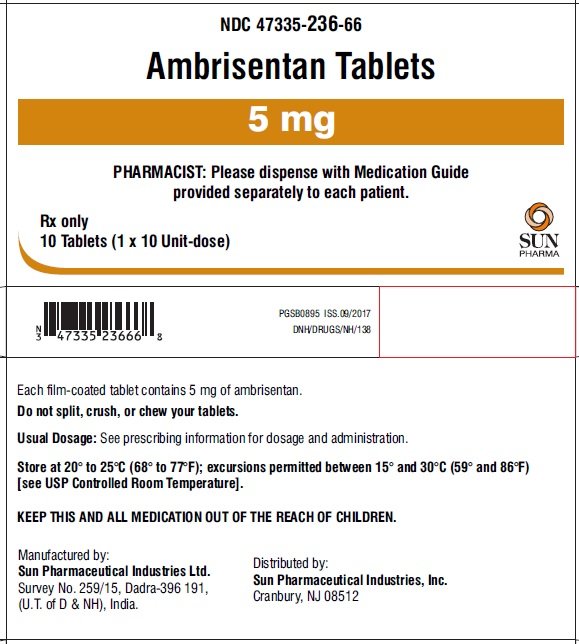Welcome to a deep dive into Ambrisentan, a vital medication for managing pulmonary arterial hypertension (PAH). The magic of Ambrisentan lies in its ability to block endothelin receptors, resulting in the relaxation of blood vessels. This article will serve as your comprehensive guide to understanding Ambrisentan, from its uses and dosage instructions to potential side effects and necessary precautions.
What is Ambrisentan and How Does it Work?

Ambrisentan, also marketed under the brand name Letairis, is a medication frequently prescribed for patients diagnosed with Pulmonary Arterial Hypertension (PAH). But what makes Ambrisentan so effective in combatting PAH?
The answer lies in its mechanism of action. Ambrisentan serves as an endothelin receptor antagonist. This means it blocks the action of endothelin, a natural substance that narrows blood vessels. By doing so, Ambrisentan helps to relax and widen the blood vessels, making it easier for the heart to pump blood through them. This not only improves symptoms but also slows disease progression, playing a significant role in managing PAH.
As always, please consult a medical professional for more information.
How to use Ambrisentan: Proper Usage Guide and Dosage Instructions
When it comes to treating pulmonary arterial hypertension (PAH) with Ambrisentan, it’s important to personalize the dosage. Here’s what you need to know:
- Starting Dose: The recommended starting dose is usually Ambrisentan 5 mg once daily.
- Possible Increase: If needed, the dose may be increased to Ambrisentan 10 mg once daily based on how well you respond to the medication and how well you tolerate it.
Key guidelines for taking Ambrisentan include:
- Ensure consistent daily intake, ideally at the same time each day to maintain steady medication levels in your system.
- Ambrisentan can be taken with or without food, offering flexibility that fits into varied daily schedules.
- Adherence to prescribed dosage is crucial for optimal therapeutic benefit and management of PAH symptoms.
This tailored dosage strategy ensures that patients receive the most effective and safe amount of medication specific to their condition.
Please consult a medical professional for more information.
Tips for Proper Usage and Minimizing Discomfort
When using Ambrisentan, there are certain things you can do to make it more comfortable and reduce any potential discomfort:
1. Missed Dose of Ambrisentan
- If you forget to take a dose and it’s almost time for your next one, just skip the missed dose.
- Continue with your regular dosing schedule at the next prescribed time.
- Do not take double doses to make up for the missed one.
2. Common Side Effects
Headache
- Drink plenty of water; it can often help relieve headache symptoms.
- Try using a cool compress or resting in a dark room.
Nasal Congestion
- Use saline nasal sprays to help clear your nose.
- Having a humidifier in your home might also provide relief.
Flushing
- Applying cool cloths to your skin during episodes may bring some comfort.
- Avoid hot drinks or alcohol as they could make flushing worse.
Swelling (Peripheral Edema)
- Whenever possible, raise your legs to reduce swelling in your lower limbs.
- Talk to your healthcare provider about suitable exercise routines.
By following these practices, patients can effectively manage side effects while staying on track with their treatment.
What to Do If You Miss a Dose of Ambrisentan?
Missing a dose of Ambrisentan can happen to anyone. If it occurs, there are some important steps that should be followed to ensure effective treatment is maintained:
- Take the missed dose as soon as you remember, unless it’s almost time for your next scheduled dose. In this case, skip the missed dose and continue with your regular medication schedule.
- Avoid doubling up on doses — taking two doses at once can increase the risk of side effects.
- For best results with Ambrisentan, consistency is key. Regular, daily use allows the medication to exert its full effect and manage PAH symptoms effectively.
Remember to communicate with your healthcare provider if you miss a dose or if there are frequent inconsistencies in your medication schedule. They can provide further guidance based on your specific treatment plan.
Precautionary Measures Before and During Ambrisentan Treatment
When considering Ambrisentan therapy, it’s essential to take specific precautionary steps to ensure safe and effective treatment:
- Full Medical Disclosure: Prior to starting Ambrisentan, disclose all medical conditions to your healthcare provider. Particular attention should be paid to any history of liver issues, anemia, or heart failure, as these conditions may influence the therapy’s safety and efficacy.
- Medication Interactions: Inform your doctor about all medications you are taking, including over-the-counter drugs and herbal supplements. Certain medications can interact with Ambrisentan, necessitating dose adjustments or even searching for alternative treatments.
- Pregnancy Risks: Due to the risk of harm to the developing fetus, women who are pregnant or planning to become pregnant must avoid Ambrisentan. It is critical for healthcare providers to discuss potential risks and alternative options with patients of childbearing age.
Taking these precautions can help manage the risks associated with Ambrisentan treatment while optimizing its therapeutic benefits.
Potential Interactions with Other Drugs and Contraceptive Efficacy
It’s important to know how Ambrisentan can interact with other medications, especially CYP3A4 inducers/inhibitors. These interactions may change how well Ambrisentan works, so the dosage might need to be adjusted or alternative treatments considered.
Another thing to consider is the effect on birth control methods. Ambrisentan has been found to make hormonal contraceptives less effective. This means that women taking Ambrisentan may need to use additional non-hormonal methods of birth control to avoid getting pregnant.
Both of these issues highlight the need for open communication between patients and healthcare providers in order to ensure safe and effective treatment.
Managing Side Effects of Ambrisentan
When taking Ambrisentan, it’s important to know about potential side effects. Most of them are mild and can be handled, but there are a few that can be severe and need immediate medical attention.
1. Rare but serious side effects
These can include severe allergic reactions like hives, difficulty breathing, or swelling of the face, lips, tongue, or throat. Liver toxicity is another serious side effect to watch out for. Symptoms may include:
- Nausea
- Upper stomach pain
- Itching
- Tired feeling
- Loss of appetite
- Dark urine
- Clay-colored stools
- Jaundice (yellowing of the skin or eyes)
If you experience any of these symptoms, contact your healthcare provider right away.
2. Monitoring liver function
Regular liver function tests are necessary during Ambrisentan therapy. This helps to quickly detect and manage any early signs of liver problems. Make sure to schedule your follow-up appointments and stick to them.
3. Anemia
Ambrisentan may decrease red blood cell count leading to anemia. Look out for symptoms like:
- Feeling light-headed or short of breath
- Rapid heart rate
- Trouble concentrating
Remember, your healthcare provider is there to assist you in managing any side effects while on Ambrisentan therapy.
Proper Storage and Safe Disposal of Ambrisentan
Properly storing and disposing of Ambrisentan is crucial to maintain its effectiveness and ensure the safety of individuals and the environment. Here are some important guidelines to follow:
How to Store Ambrisentan:
- Keep at Room Temperature: Store Ambrisentan tablets at 20°C to 25°C (68°F to 77°F); temporary excursions permitted between 15°C to 30°C (59°F to 86°F).
- Avoid Moisture: Store in a dry place. Keep the tablets in their original container with the lid tightly closed.
- Keep Away from Light: Protect from direct sunlight; store the medication in its original packaging until use.
How to Dispose of Expired or Unused Medication:
- Follow Local Guidelines: Consult your pharmacist or local waste disposal company for specific instructions on how to safely dispose of Ambrisentan.
- Use Drug Take-Back Programs: If available, participate in a drug take-back program which is the preferred method for disposing of unused medications.
- Do Not Flush: Avoid flushing medications down the toilet unless specifically instructed by the disposal guidelines.
- Prevent Unintended Use: Remove personal information from prescription labels before disposal to protect privacy and prevent unauthorized access.
By following these recommendations, patients can help ensure their own safety and contribute to a healthier environment.
In Conclusion
Ambrisentan is a major breakthrough in PAH treatment, bringing hope and better quality of life to those dealing with this difficult condition. It works by blocking endothelin receptors, which helps reduce symptoms and improve physical activity ability.
However, it’s important to remember that every person’s experience with PAH is different. That’s why it’s crucial to communicate openly with your healthcare provider. They can provide personalized guidance based on your specific health situation and treatment objectives.
If you’re considering Ambrisentan therapy, make sure to have a detailed conversation with your medical team. This will enable you to move forward on your journey towards better health confidently and with a clear understanding of what to expect.
Read More: Agomelatine: What is it and What you need to Know



